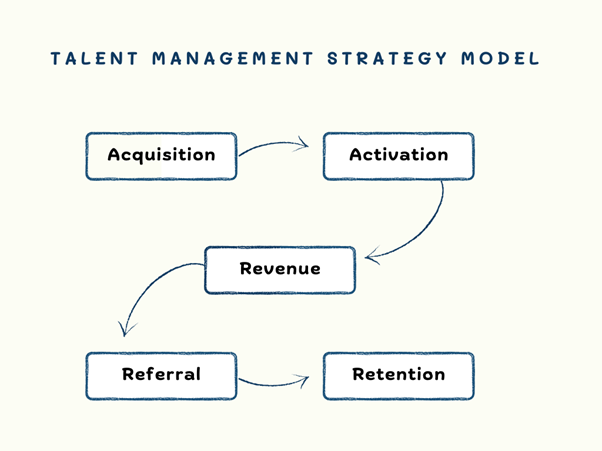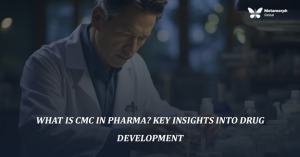Artificial Intelligence (AI) is now a fundamental part of our daily operations, and the workforce has become more diverse and multifaceted. Traditional HR strategies are no longer sufficient in this rapidly evolving environment. To succeed, HR leaders need to blend technology with a human approach. AI can help with more innovative hiring, personalized employee development, and better decision-making. A study, “Artificial Intelligence-Driven Talent Management System: Exploring the Risks and Options for Constructing a Theoretical Foundation,” highlights how AI reshapes talent management while posing new challenges.
Companies that adapt to these changes will turn challenges into opportunities, while those that don’t fall behind. Let’s explore the key talent management strategies that define success in 2025.

Why Implement Talent Management Practices?
Implementing talent management practices through an HR Masterclass creates a motivated, high-performing workforce, driving long-term business success
- Enhances Retention & Engagement
Engaged employees communicate, collaborate, and stay committed to their roles. Talent management fosters growth opportunities, making employees feel valued and more likely to stay. - Bridges Skill Gaps
A lack of skilled personnel can slow growth and lower motivation. Identifying key competencies and offering targeted training ensures a capable workforce. - Reduces Hiring Costs
Replacing employees is costly. A strong talent management strategy improves retention, reducing turnover expenses. - Boosts Productivity
Engaged employees perform better. Streamlining processes and providing essential resources enhances efficiency and output.

Key Strategies For HR Leaders in 2025 Here We Go!
An effective talent management process involves recruiting, onboarding, performance management, compensation planning, learning, and succession planning. When these elements align, businesses can strengthen their workforce and gain a competitive edge.
1. AI-Powered Recruitment: Finding the Right Fit Faster
Hiring the right candidate is no longer about sorting through stacks of resumes. AI-powered tools can now analyze skills, predict job performance, and reduce hiring biases.
How AI is Changing Recruitment
- Resume screening: AI filters applications based on skills, experience, and cultural fit.
- Predictive analytics: Machine learning predicts a candidate’s success based on past data.
- Chatbots & automation: Virtual assistants handle initial screenings and interview scheduling.
Challenges & Solutions
- Bias in algorithms: Train AI models on diverse data sets to prevent discrimination.
- Lack of human connection: Combine AI insights with personal interviews to balance technology with empathy.

Discover how effective succession planning enhances talent management in our HR Masterclass – 5th Edition. 🚀
2. Skills-Based Hiring Over Degrees
In 2025, skills matter more than degrees. More companies are prioritizing hands-on experience, certifications, and micro-credentials over traditional diplomas.
Why the Shift?
- Tech advancements make some degrees outdated.
- Remote work increases the demand for adaptable, self-taught professionals.
- Diversity & Inclusion improve when hiring focuses on skills rather than pedigree.
Difference Between Traditional Hiring & Skills-Based Hiring
|
Traditional Hiring |
Skills-Based Hiring |
|
Focus on degrees |
Focus on experience & capabilities |
|
Long hiring cycles |
Faster screening with skill tests |
|
Limited talent pool |
Diverse & broader candidate selection |

3. Employee Experience: The Key to Retention
People don’t just want jobs; they want fulfilling careers. In 2025, HR leaders must prioritize employee experience (EX) to reduce turnover and improve engagement.
What Enhances Employee Experience?
- Flexible work models: Hybrid, remote, and four-day workweeks.
- Well-being programs: Mental health support, financial wellness, and career coaching.
- Personalized career paths: AI-driven learning and upskilling opportunities.
Quick Fixes for a Better EX
- Regular pulse surveys to gauge employee satisfaction.
- Transparent career progression plans.
- Recognizing achievements beyond work KPIs.

4. The Rise of Internal Talent Marketplaces
Gone are the days when employees had to leave for better opportunities. Internal talent marketplaces allow companies to fill roles faster by reskilling current employees.
Benefits of Internal Hiring
- Cost savings on external recruitment.
- Higher retention as employees see growth opportunities.
- Better cultural fit since they already know the company values.
Steps to Build an Internal Talent Marketplace
- Map skills & career paths for every role.
- Create upskilling programs with AI-driven learning modules.
- Encourage job rotation to help employees explore new roles.

5. Data-Driven Performance Management
Annual performance reviews are outdated. Companies are shifting toward real-time feedback and data-driven evaluations.
Why Traditional Reviews Are Failing
- Delayed feedback leads to disengagement.
- One-size-fits-all criteria don’t reflect individual strengths.
- Lack of transparency in evaluation methods.
New-Age Performance Management
Old System | Data-Driven System |
Annual reviews | Continuous feedback |
Subjective ratings | AI-driven performance metrics |
Top-down approach | 360-degree feedback |

6. DEI (Diversity, Equity & Inclusion) as a Business Strategy
Diversity isn’t just a checkbox—it’s a competitive advantage. Companies with diverse teams outperform their peers by 36% (McKinsey, 2024).
How to Build a Strong DEI Culture
- Blind recruitment to eliminate biases in hiring.
- Mentorship programs for underrepresented groups.
- Equal pay audits to close the wage gap.
Measuring DEI Success
- Representation metrics: Track hiring and promotion rates across demographics.
- Engagement surveys: Ensure employees feel valued and included.
- Leadership accountability: DEI goals should be tied to executive performance.
7. People Analytics for Smarter Decision-Making
HR is no longer just about intuition—it’s about data-driven decision-making. In 2025, HR leaders are using people analytics to predict trends and optimize workforce strategies.
How People Analytics Works
- Turnover predictions: AI detects flight risks before resignations happen.
- Employee sentiment analysis: Surveys and AI tools measure engagement.
- Workforce planning: Predicts future hiring needs based on company growth.

Pro Tip: Leverage platforms like Workday or Visier for advanced HR analytics.
Build A Winning Team With Smart Talent Management
Great businesses are built by great teams. A well-planned talent management strategy ensures your workforce is skilled, engaged, and ready to drive success. Companies can stay ahead of the competition by closing skill gaps, boosting retention, and streamlining hiring. At Metamorph Edu, we help businesses optimize talent strategies with AI-driven solutions that enhance hiring, training, and workforce planning. Ready to transform your team into a powerhouse? Let’s make it happen—because your people are your biggest asset! 🚀
Frequently Asked Questions (FAQs)
1. How does HR masterclass training enhance talent management?
HR masterclass training in 2025 plays a crucial role in modern talent management by equipping HR professionals with the latest strategies in AI-driven recruitment, employee engagement, and workforce planning. These advanced programs help businesses improve retention, close skill gaps, and develop leadership pipelines, ensuring long-term success in a competitive market.
2. What are the key trends shaping talent management in 2025?
In 2025, talent management is evolving with trends like AI-powered hiring, personalized learning pathways, skills-based recruitment, and an increased focus on employee well-being. Companies are also prioritizing hybrid work models, advanced HR analytics, and Diversity, Equity, and Inclusion (DEI) initiatives to create a more engaged and high-performing workforce.
3. How can businesses close skill gaps through talent management strategies?
To bridge skill gaps in 2025, businesses must adopt data-driven talent management strategies such as AI-based workforce analysis, continuous upskilling programs, and mentorship initiatives. Identifying future workforce needs, offering targeted learning opportunities, and integrating competency-based hiring ensures companies stay ahead in a rapidly changing job market.
4. What is the link between succession planning and talent management?
Succession planning is a core element of a strong talent management strategy, ensuring business continuity by preparing employees for leadership roles. In 2025, businesses are leveraging predictive analytics, leadership development programs, and performance-based career progression to create a steady pipeline of future leaders. Learn more about effective succession planning here.
5. How does remote and hybrid work impact talent management in 2025?
With remote and hybrid work becoming the norm in 2025, talent management strategies must focus on virtual onboarding, AI-driven employee engagement tools, flexible work policies, and digital collaboration platforms. Companies that embrace these trends enhance productivity, improve work-life balance, and attract top talent from global talent pools.







